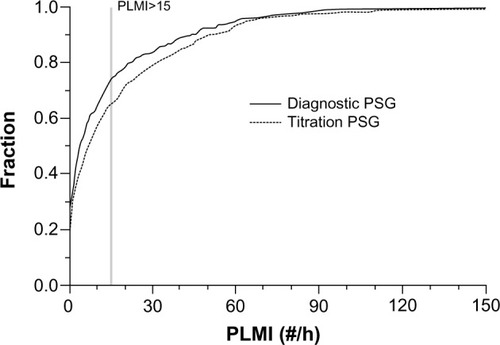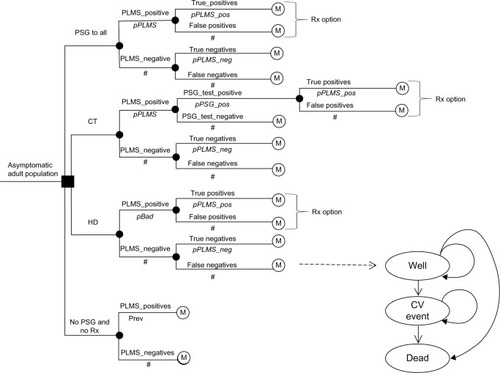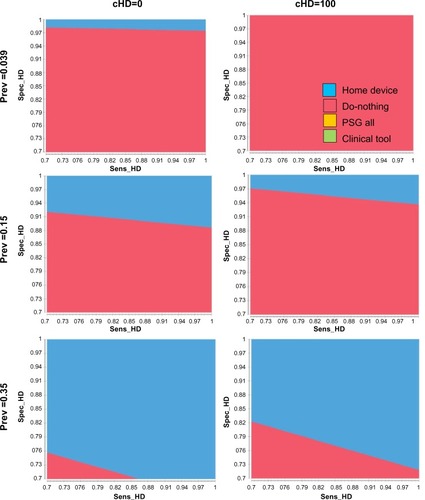Figures & data
Table 1 Costs, effectiveness, and probability-based values
Table 2 Baseline PSG characteristics by OSA status
Table 3 Demographic and objective characteristics by OSA status
Figure 1 The distribution of PLMI values (x-axis) is given as a cumulative fraction (y-axis) for OSA patients who underwent two PSG nights.
Abbreviations: PLMI, periodic limb movement index; OSA, obstructive sleep apnea; PSG, polysomnography; h, hour.

Table 4 Odds ratios values for significant predictors of PLMI ≥15
Figure 2 Structure of the decision model.
Abbreviations: PLMI, periodic limb movement index; PSG, polysomnography; PLMS, periodic limb movements of sleep; CT, clinical tool; HD, home device; M, markov node.

Figure 3 Sensitivity analysis.
Abbreviations: PLMI, periodic limb movement index; PSG, polysomnography; cHD, cost for home device; Sens, sensitivity; Spec, specificity; Prev, prevalence.

Table S1 Assessment of PLMI and LMAI per categorical variable
Table S2 Spearman’s correlation analysis for PLMI and LMAI per OSA status
Table S3 Spearman’s correlation analyses for age with multiple covariates
Table S4 Spearman’s correlation analyses for sex with multiple covariates (M=1, F=0)
Table S5 Spearman’s correlation analyses for BMI with multiple covariates
